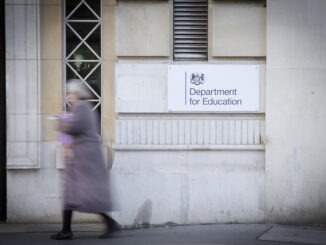
The government has sent out 350,000 air monitors to schools in England to check the quantity of CO2 in the air, measured in parts per million, mainly from exhaled breath – but it is only providing 8,000 air purifiers for classrooms
A survey by the National Association of Head Teachers (NAHT) suggests that the Department for Education may have underestimated the demand for air filters. Paul Whiteman, the NAHT’s general secretary, says the survey suggests 8,000 air filters are unlikely to satisfy demand from the more than a quarter of a million classrooms in England. “We will encourage government to monitor demand and make more available, as required, to ensure all schools that need one, get one. Adequate ventilation in classrooms should not be limited to first-come, first-served,” he said.
However, Nadhim Zahawi, the education secretary, told the commons that “The majority of schools didn’t report any issues with the atmosphere in the classroom.” The government had ordered 8,000 purifiers because feedback suggested this was all that was needed. To provide them for all schools would be a waste of taxpayers’ money, he said.
Munira Wilson, the Liberal Democrat education spokesperson, disagrees and says schools are missing out because the DfE has set the bar too high; only those with rooms consistently above 1500 ppm of CO2 could get free filters – nearly twice 800 parts per million (ppm), the widely agreed safe level.
“The government has completely failed teachers, pupils and parents alike with their botched air purifier scheme,” she said. “Not only do their own criteria fail to keep most classrooms safe, the earliest a school can access equipment is next month. This snail’s pace is frankly unacceptable.”
Expert advice
Whilst the debate over government provision of air filters continues, we spoke to two industry experts about how to improve air quality and ventilation in schools. Elisabete Wells, regional marketing director, ACCO UK Ltd, said,“Air quality and ventilation in schools have become major causes for concern since the onset of the pandemic – and this winter promises to be especially challenging as the normal winter time surge of airborne illnesses couples up with new COVID-19 variants, such as omicron.
“Current government advice suggests that teachers open a window to circulate fresh air in their classrooms but, for many schools, this is impractical due to the cold temperatures, noise, or air pollution in their locations.
If students get sick, they risk missing lessons and falling behind; if teachers fall ill, schools can end up short staffed with no choice but to cancel classes. Therefore, introducing an air purifier to help trap and destroy harmful airborne viruses and bacteria in the classroom is critical for keeping everyone healthy and ensuring learning stays on track.
“Education secretary Nadhim Zahawi has pledged 8,000 air cleaning units for schools and colleges, but this is nowhere near enough and some educators are taking on the challenge of sourcing their own. To help support schools with improving their air quality, for a limited time, anyone who purchases the Leitz TruSens Z-3000 air purifier for the classroom can claim a Z-1000 for the office absolutely free. We understand the importance of having a safe and healthy place to learn, and really want to do our part to support that.”
Tim Browning, head of business development at Fellowes air purifiers, added, “It is becoming more evident that stringent hygiene procedures alone do not effectively remove the threat of COVID-19 from the classroom. While these control measures are necessary, numerous scientific studies demonstrate beyond any reasonable doubt that viruses such as COVID-19 are transmitted from person-to-person by aerosolised droplets, rather than by cross-contamination via surfaces. This is leading to a shift in focus towards air cleanliness when mitigating the risks of using shared spaces to pupils and staff.
“By choosing the right technology, adequate ventilation and air purification systems can remove over 99.99% of germs and viruses – including Covid-19 / SARS-CoV-2, the H1N1 ‘flu virus and other airborne contaminants. An effective system will also reduce the spread of bacteria, allergens, volatile organic compounds and unpleasant odours – resulting in a healthier environment that prevents disruption to our education system.
“As specialists in indoor air quality, Fellowes advise those responsible for ensuring student and staff welfare to consider three key areas when introducing an air purification system. Firstly, whether the system has been proven to remove COVID-19. Secondly, ensuring the chosen solution features H13 HEPA filters and, finally, whether you can see that the air is being cleaned when the system is in operation.”



Be the first to comment